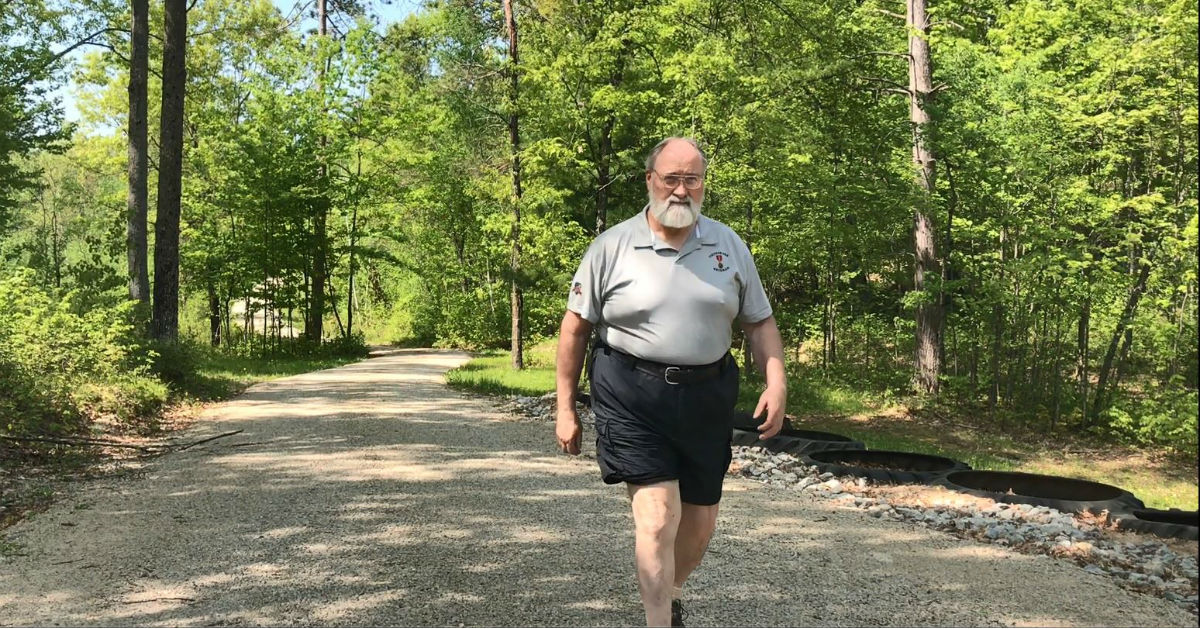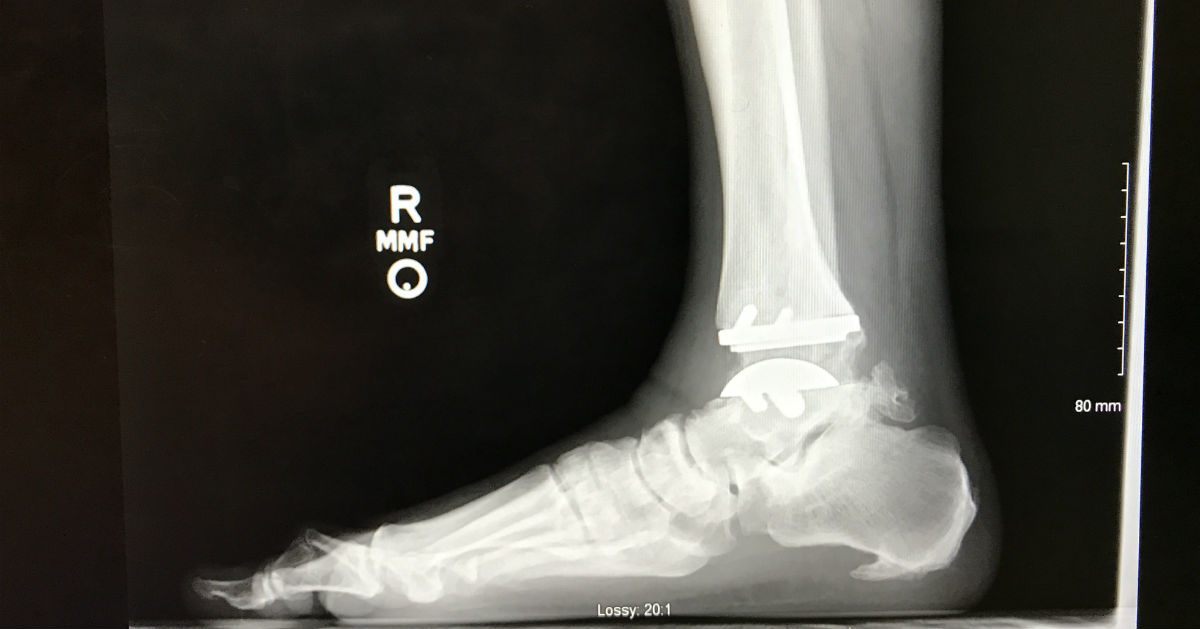Matt Stevenson, a Vietnam War-era veteran, didn’t experience combat during his military career, yet he left the service as one of the walking wounded.
That’s because during his time with the U.S. Army, Navy and Marine Corps, the training regimens and repetitious nature of some of his jobs put severe wear and tear on his right ankle.
Being on his feet for long periods of time aggravated the ankle, Matt says. “Then I would sit down, get the foot up and stay off of it for a number of hours.”
The constant pain and weakness in that ankle bothered him for almost 40 years, until he finally sought the aid of Jason George DeVries, DPM, a fellowship-trained foot-and-ankle surgeon with Orthopedics & Sports Medicine BayCare Clinic.
“Back in the ‘70s in the military, you didn’t run in fancy shoes or anything, you ran in combat boots,” Matt says during a conversation at his home in the woods near Wausaukee, Wisconsin. “You do a lot of long-distance running of any sort, you’re pounding that joint continuously. Jumping up and down off of vehicles and stuff, I’m a big guy … I do not land gently.”
Matt also played volleyball and basketball for years and says the constant leaping and landing put additional stress on his ankle. It never fully recovered.
“You can do some serious damage by landing hard,” he says. “Jumping up and down landing on that, that’s all very hard on the joints. That is one joint that did not do well.”
Over the years, the damage to his ankle, exacerbated by arthritis, was so severe that Matt says one physician offered him some grim advice.
“At one point I was told by a foot doctor the best thing I could do is break my ankle and let it heal properly,” Matt says. “The X-rays, it looked like a windshield that was hit with a hammer, all hairline fractures throughout.”
Matt sought help from the Veterans Administration health care system and says he was satisfied with that care. Wanting a second opinion, though, he researched ankle treatments.
“I came across this video and it was a gentleman that had had his ankle done before and he was talking how good it was and that he could do stuff that he hadn’t done for years,” Matt says. The video was about ankle replacement surgery performed by DeVries.
“I went, ‘That’s the direction I need to start researching.’”

Matt sought out DeVries’ expertise.
DeVries proposed ankle replacement surgery. During the procedure, the damaged ankle joint is replaced with an artificial implant. The implant is usually metal or plastic. During this minimally-invasive surgery, the surgeon removes damaged cartilage and bone from the affected ankle and inserts a new ankle joint.
The new joint is made of metal caps that replace damaged bone, cushioned by a high-grade plastic that simulates a patient’s natural cartilage.

“It was the obvious right choice,” DeVries says during Matt’s follow-up office visit. “He’s doing great, no pain, moving around well, able to work on uneven ground. At this point, he’s fully released. Go back to having a good life.”
That’s exactly what Matt says he’s doing.
He’s cutting firewood, working on siding his house and walking along much of the uneven ground surrounding his secluded home, including the one-mile trek to the end of his road.
“It was a good decision to make,” Matt says of his ankle replacement surgery. “The pain’s gone. I have my mobility back.
“Is it like the original equipment? No, it’s never gonna be like the original equipment, but I can do stuff that I wasn’t doing before – taking the dog for a nice long walk and walking in my woods. That’s all that counts now.”